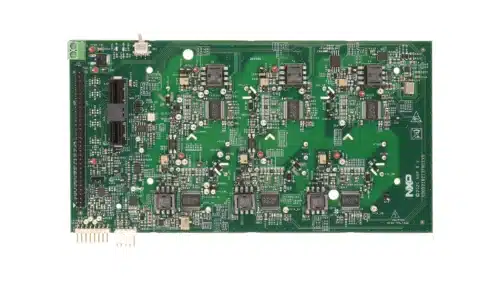NXP’s three-phase inverter reference design is vital for Electric Vehicles (EVs), merging efficiency, galvanic isolation, and motor control on a comprehensive platform.

Three-phase inverters are integral to our daily lives, serving household and industrial needs. Industries rely on them to deliver steady voltage, ensuring efficient operation of heavy machinery. At home, appliances like central air conditioning units depend on them for smooth function. Their adaptability and efficiency make them indispensable in today’s power-dependent world. NXP Semiconductors has launched a reference design for a three 3-phase inverter. The RDGD3162I3PH5EVB is a comprehensive evaluation board for a three-phase inverter with six GD3162 gate drivers, fault management and accompanying circuitry. The board incorporates low-voltage and high-voltage isolations, enhanced by the gate drive’s integrated galvanic signal isolation. Additional attributes include detection of desaturation short-circuits, sensing of Insulated Gate Bipolar Transistor (IGBT) or Silicon Carbide (SiC) temperature, inbuilt isolated flyback power sources, monitoring of the DC link bus voltage, sensing of phase and DC link bus currents, and support for motor resolver excitation and processing.
The automotive sector stands out, especially with the rise of Electric Vehicles (EVs). A significant component within these EVs is the three-phase inverter, which plays a crucial role in their operation. The low-voltage domain uses an external 12 V DC supply (VPWR), typically sourced from a vehicle battery to power non-isolated circuits. A 5 V regulator provides VDD to the gate drive devices. This domain encompasses the connection between the MCU and the gate driver’s control registers and the logic control. You’ll need both the kit contents and a Windows PC workstation equipped with FlexGUI software to engage with the reference design effectively. The kit comprises several essential components, including the fully assembled and tested evaluation board, featuring a three-phase inverter populated with 5.0 V compatible gate driver devices, all securely stored within an anti-static bag.
The evaluation board comes equipped with gate drivers and corresponding protection circuitry. It can execute double pulse and short-circuit tests on phase U, effectively utilizing the KITGD316xTREVB and FlexGUI tools. The board can seamlessly connect to HybridPACK drive-type SiC-specific modules for a comprehensive three-phase evaluation and development. The flexibility of daisy chain SPI communication is notable, allowing a 2-channel connection for three high-side and three low-side gate drivers or a 1-channel connection for all six gate drivers. Essential power, ground, and signal test points are easily accessible, enhancing the evaluation process. The board further supports interfacing with MCU control via 2 × 32 Peripheral Component Interconnect Express (PCIe) sockets, facilitating connection to compatible control units. Optional provisions for monitoring DC bus voltage and current, along with phase current feedback connections and a resolver signal connector, contribute to the board’s versatility and utility.
NXP Semiconductors have tested this reference design. It comes with a Bill of Material BOM, Schematic, etc. You can find additional data about the reference design on the company’s website. To read more about this reference design, click here.





